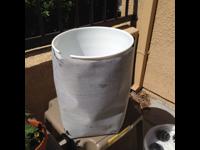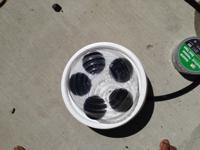New NFT Hydroponics System
This is my promised blog post on my new, portable hydroponics system. This is an NFT system contained entirely in one bucket. I haven’t planted anything in it yet (still waiting for my mother tomato plants to grow so I can start some cuttings), but everything is now ready for transplants.
What is NFT?
NFT stands for Nutrient Film Technique, and it’s one of the most deployed hydroponics systems. NFT is a hydroponic technique that doesn’t require the use of growth medium, like soil, clay pebbles, or perlite. Instead, plant roots are grown directly in a thin (think a few millimeter thick) film of water. This film is generated when a pump moves water from a nutrient reservoir into the grow bed. The water is pumped at a slow enough rate so that it drains out via gravity before the root zone ever fills up.
So why is NFT so widely used? Basically, NFT gives plant roots exactly what they want. Everyone knows that plant roots need water, but plant roots also need equal amounts of oxygen! In most water culture hydroponic systems where roots are directly exposed to water, oxygen must be supplied in some form, whether through aquarium bubblers, repeated flooding and draining of the growing area, or a small trickle of water. All of these solutions have their drawbacks. In particular, using aquarium airstones to oxygenate water requires the use of an air pump, and if that component fails, root death will occur relatively rapidly. Repeat flooding and draining is also subject to failure if either the pump or the timers stop working. Finally, drip-based solutions are subject to pump failure and drip line clogging as salts build up. Unlike all these systems, NFT has only one source of failure – the pump. As long as the pump is working and has enough electricity, the system will function in some form.
There are some drawbacks to NFT though, and they all basically boil down to issues with the root mat. Plant root systems do really well in NFT, and so on, plant roots cover the entire root zone area where the nutrient film used to be. This can result in puddling – areas of nutrient solution that aren’t drained via gravity and become stagnant. This leads to root death in those areas, because the solution suffocates the roots there. I’m hoping that because my system is so small, the pump action will manage to agitate all these puddles, thus mitigating this issue.
My system
Okay that’s enough of the theory, let’s talk about my system!
My system is a minified NFT system consisting of just one 5-gallon bucket and cover, a 12 inch diameter grow tray, a pump, an air pump, an air stone, 5 net pots and some vinyl tubes and joints. The grow tray is suspended over the bucket (it fits snuggly on the top of the bucket). The pump delivers nutrient solution from the bottom of the tank to the grow tray, where the water is drained back to the reservoir through holes drilled into its bottom. Water level is maintained at a few millimeters – perfect for plant roots.
The bucket cover goes over the grow tray and has five holes in it where the net pots are hung. The net pots are hung so that the water level in the grow tray barely touches their bottom, ensuring good oxygenation for plant roots.
The air pump is attached to an air stone in the nutrient solution. The pump works continuously to oxygenate the solution, thus providing another vector of oxygen delivery to plant roots.
Since I had a white bucket, I had to make an opaque wrapping for it, so that no light gets through. Light getting into the nutrient reservoir is bad, because it leads to perfect conditions for algal growth. For this covering, I used some white-on-black plastic fabric I got at the fabric store. I put the white side on the outside to reflect the sunlight, so the nutrient solution remains cool. The black side went on the inside and kept all the light out.
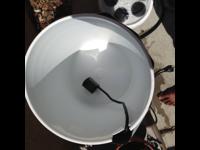
The small pump I’m using in the bucket. This was an extremely cheap (~$7) and low-power pump, but it’s exactly what I need for my NFT system. NFT systems only need to deliver a thin film of water to each plant, so any larger pump would end up drowning the plant roots.
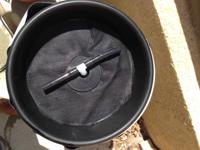
I bought a 12-inch diameter grow tray for the plant roots. The tray is suspended at the top of the bucket and has holes drilled into it so that the nutrient solution drains from the root zone. I added a plastic netting to the bottom so that plant roots would be discouraged from going through these holes and blocking drainage, but I expect that will probably happen anyway. My contingency plan is to drain a large drainage hole in the side of the tray to maintain water level.
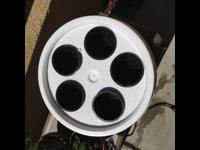
The net pots go in the bucket cover, which had five holes cut into it. The cover went over the grow tray. Finally, I put 5 2-inch neoprene collars inside each pot (not pictured). These collars will provide support for my plant stems as the plants mature. Also, the collars will keep any stray sunlight from reaching the plant roots.
